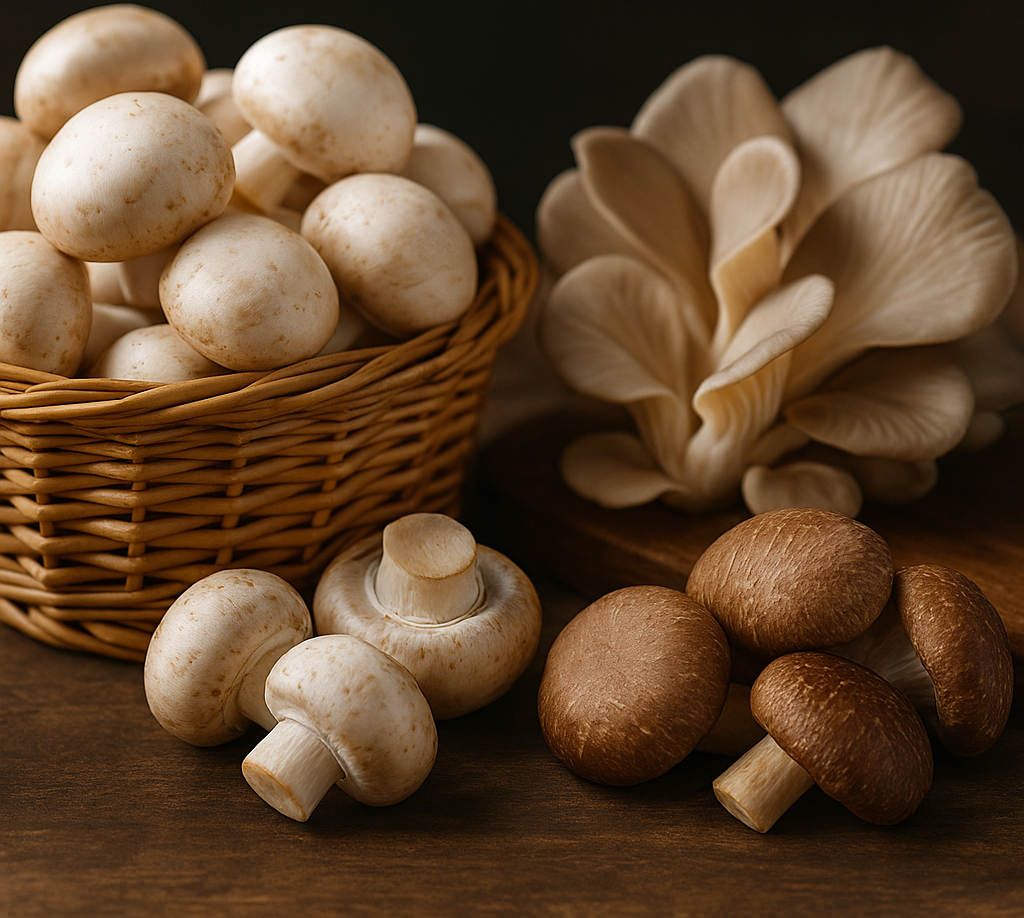Innovative News
Mushroom Farming in India: A Profitable Agribusiness Opportunity in 2025

Overview of the Blog
{ Indian mushrooms are one of the most profitable agribusinesses. Farmers, entrepreneurs, and urban producers are capitalizing on mushroom demand with its minimal investment and great returns. The most common mushrooms are button, oyster, and shiitake owing to their high market value and nutritional worth. }
Why Mushroom Farming is Profitable in 2025
Mushroom cultivation has several advantages that make it a highly profitable agribusiness in India:
- Low Initial Investment – Mushroom farming does not require vast tracts of land, and it can even be done in a controlled indoor environment.
- High Market Demand – Mushrooms are a sought-after commodity in supermarkets, restaurants, hotels, and even export markets.
- Short Cultivation Cycle – Unlike traditional crops, mushrooms grow quickly, allowing for multiple harvests in a year.
- Health and Nutritional Benefits – Mushrooms are packed with essential nutrients, making them a preferred choice among health-conscious consumers.
- Sustainable and Eco-Friendly – Mushroom cultivation can utilize agricultural waste as a substrate, promoting sustainability.
- Growing Industry Trends – With the increasing focus on organic farming and sustainable agriculture, mushrooms are expected to be one of the most profitable crops in 2025.
Popular Types of Mushrooms Grown in India
1. Button Mushrooms (Agaricus bisporus)
Button mushrooms are the most commonly consumed variety in India and globally. They are white, round, and widely used in culinary dishes. These mushrooms require a controlled temperature of 22–28°C and humidity levels between 80–90%. They grow on composted manure, making them an excellent choice for commercial farming.

2. Oyster Mushrooms (Pleurotus ostreatus)
Oyster mushrooms are easy to cultivate and grow well in tropical and subtropical regions. They thrive on organic substrates such as paddy straw, wheat straw, and sawdust. The cultivation process is simple, and the mushrooms mature within 4-6 weeks, making them ideal for small-scale and commercial farming.

3. Shiitake Mushrooms (Lentinula edodes)
Shiitake mushrooms are valued for their medicinal properties and unique flavor. Though they require a more advanced cultivation technique compared to button and oyster mushrooms, they fetch a high price in the market. Shiitake mushrooms are grown on hardwood logs or artificial substrates and need a temperature of 15–20°C for optimal growth.
How Can You Start Mushroom Farming Step by Step?
1. Selecting the Right Variety
Choose the mushroom variety based on climate, investment capacity, and market demand.
2. Setting Up the Cultivation Space
Mushrooms can be grown in a specially designed room, shed, or polyhouse. Proper ventilation, temperature, and humidity control are essential for a successful harvest.
3. Substrate Preparation
Each mushroom variety has different substrate requirements. Button mushrooms require compost, oyster mushrooms grow well on agricultural waste like straw, and shiitake mushrooms need hardwood logs.
4. Spawn Inoculation
Spawn (mushroom seeds) are introduced into the prepared substrate. Proper hygiene and sterile conditions are maintained to prevent contamination.
5. Growth and Harvesting
Mushrooms require a dark, humid environment with regulated temperatures. Harvesting begins when the mushrooms reach their desired size. Regular monitoring ensures healthy growth and higher yield.
Market Potential and Business Opportunities in 2025
The mushroom industry in India is growing at a rapid pace. With increasing awareness of their health benefits, mushrooms are gaining popularity in households, hotels, and processed food industries. Additionally, there is an expanding export market for Indian mushrooms, especially dried and processed varieties.
Farmers can explore different revenue streams such as:
- Selling fresh mushrooms in local markets and supermarkets
- Supplying to restaurants, hotels, and catering businesses
- Processing mushrooms into dried, pickled, or powdered forms for extended shelf life
- Exporting to international markets
- Partnering with organic agriculture ventures for added market reach
Challenges and How to Overcome Them
While mushroom farming is profitable, it comes with challenges such as:
- Climate Sensitivity – Maintaining optimal temperature and humidity is crucial.
- Pest and Disease Management – Proper hygiene and ventilation reduce the risk of infections.
- Market Access – Establishing connections with buyers and distributors can enhance sales.
- Storage and Transport – Investing in proper packaging and storage facilities helps in minimizing losses.
Conclusion
Mushroom farming in India is a highly rewarding business with immense potential. As of 2025, it remains one of the most profitable ventures in agriculture due to increasing consumer demand, sustainable farming methods, and high returns. With the right knowledge, investment, and management, farmers and entrepreneurs can achieve significant profits. Whether it’s button, oyster, or shiitake mushrooms, cultivating these fungi can open new doors to sustainable and profitable agribusiness. If you are looking to start a venture in agriculture, mushroom farming is undoubtedly a promising choice.












